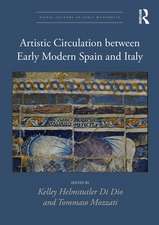The Emblem in Early Modern Europe: Contributions to the Theory of the Emblem
Autor Peter M. Dalyen Limba Engleză Paperback – 14 oct 2024
| Toate formatele și edițiile | Preț | Express |
|---|---|---|
| Paperback (1) | 260.13 lei 6-8 săpt. | |
| Taylor & Francis – 14 oct 2024 | 260.13 lei 6-8 săpt. | |
| Hardback (1) | 766.65 lei 6-8 săpt. | |
| Taylor & Francis – 28 iun 2014 | 766.65 lei 6-8 săpt. |
Preț: 260.13 lei
Preț vechi: 311.48 lei
-16% Nou
Puncte Express: 390
Preț estimativ în valută:
49.78€ • 52.08$ • 41.35£
49.78€ • 52.08$ • 41.35£
Carte tipărită la comandă
Livrare economică 03-17 aprilie
Preluare comenzi: 021 569.72.76
Specificații
ISBN-13: 9781032925387
ISBN-10: 1032925388
Pagini: 248
Dimensiuni: 156 x 234 mm
Greutate: 0.46 kg
Ediția:1
Editura: Taylor & Francis
Colecția Routledge
Locul publicării:Oxford, United Kingdom
ISBN-10: 1032925388
Pagini: 248
Dimensiuni: 156 x 234 mm
Greutate: 0.46 kg
Ediția:1
Editura: Taylor & Francis
Colecția Routledge
Locul publicării:Oxford, United Kingdom
Public țintă
AcademicCuprins
Contents: Preface; Introduction; Recent emblem theory; The importance of emblems; Truth in emblems; Emblems as transmitters of knowledge and traditions; Mnemonics and emblems; Are emblem inscriptiones always mottoes?; Is there visual rhetoric in some emblem pictures?; How were and how are emblems read?; On the interpretation of emblems; Jesuit emblems: in the service of God, man or the Society of Jesus?; Selective bibliography; Index.
Recenzii
'The principal strength of the book is Daly’s immersive philological method; he collates his material and selected images from several book cultures (impressive enough!), and he also supplies some close and measured distinctions. For example, he organizes his data into cultural units, such as Dutch emblem-books, English emblem-books, Jesuit emblem-books, "realistic" emblem-books, and so on. Daly’s discussion of page design and the physical layout of emblem pages in the printed emblem-books is entirely useful; he shows, with numerous examples, that the emblem presentation in most early-modern printed books had its own signature structure (or "visual rhetoric"): viewers were engaged optically and mentally as the eye would scan over an entire page, seeking to decode and grasp the message of the emblem and ’language’ of the page. (Early cerebrations for the early-modern brain, indeed!)' Appositions
Notă biografică
Peter M. Daly has degrees from universities in Bristol and Zurich and spent most of his university career in Canada. His research and publications have been largely on emblems and German baroque literature.
Descriere
The emblem was big business in early-modern Europe, used extensively not only in printed books and broadsheets, but also to decorate pottery, metalware, furniture, glass and windows and numerous other domestic, devotional and political objects. At its most basic level simply a combination of symbolic visual image and texts, an emblem is a hybrid co












